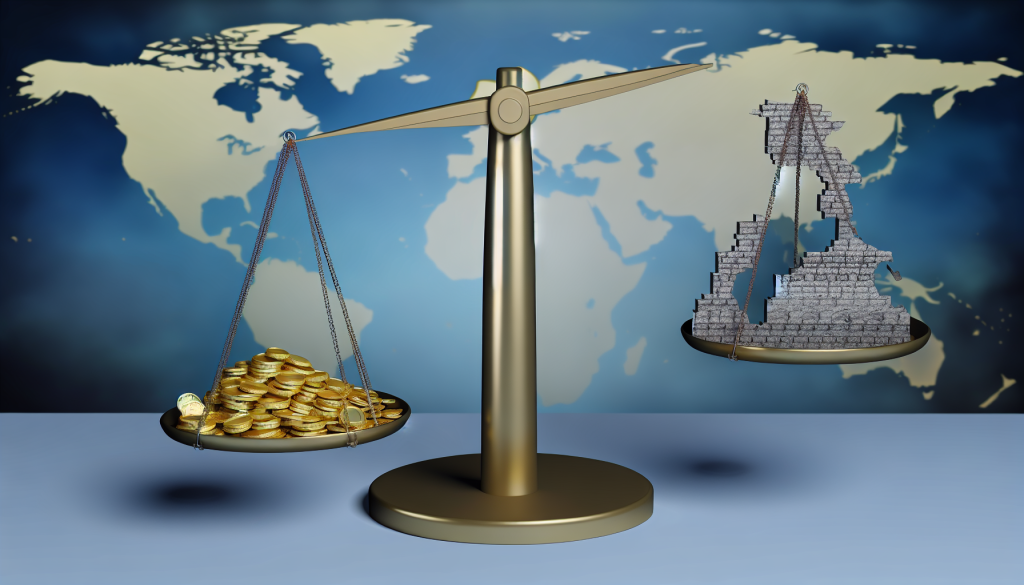Rising Tensions: U.S. Sanctions and Military Actions in the Russia-Ukraine Conflict
Increased Sanctions on Russia
In a significant development, U.S. Treasury Secretary Scott Bessent announced plans for increased sanctions on Russia as part of a broader strategy amidst a stalled peace effort in the ongoing conflict in Ukraine. Bessent indicated that the announcement could come as soon as the next day, emphasizing a “substantial pickup” in sanctions aimed at crippling Russia’s ability to continue its military operations.
This announcement coincided with critical discussions between NATO Secretary General Mark Rutte and President Donald Trump, underscoring the urgency of international military and financial support for Ukraine. The nature of the sanctions remains undisclosed; however, they reflect a growing frustration among Western leaders over Russia’s relentless military campaign.
Recent Attacks on Ukrainian Civilians
While diplomatic solutions remain elusive, the crisis on the ground intensifies. In coordinated attacks, Russian forces targeted multiple Ukrainian cities, leading to widespread destruction and civilian casualties. Reports reveal that at least six individuals lost their lives in strikes that hit eight cities overnight, including a devastating incident in Kyiv where a mother and her two young daughters were killed. Such relentless bombardment has left many Ukrainian citizens in shock and despair, with authorities saying 29 people were injured in Kyiv alone, including five children.
Russian drones and missiles were notably active, with Ukrainian officials reporting that over 400 drones and 28 missiles were launched, primarily to strike Kyiv’s critical infrastructure.
Stagnant Peace Efforts
Despite ongoing military pressure, peace negotiations remain at a standstill. President Trump’s previous attempts to negotiate an end to the war, which began with Russia’s invasion over three years ago, have largely been met with resistance from the Kremlin. Trump expressed his disappointment with Russian President Vladimir Putin’s refusal to compromise on key terms for a ceasefire and peace talks.
Recently, Trump indicated that a proposed meeting with Putin is on hold due to concerns that it may not yield productive results. During this turbulent period, Zelenskyy suggested that Trump’s idea of freezing current front-line positions could be a viable stepping stone towards negotiation, highlighting the complex interplay of military strategy and diplomatic dialogue.
Military Strikes and Counteractions
In a retaliatory move, the Ukrainian military has conducted strikes on critical Russian infrastructure. Reports indicated successful strikes on a chemical plant in Bryansk, known for its production of military materials, showcasing Ukraine’s adaptive military strategies in response to ongoing assaults. These strikes aim to undermine the logistical and operational capabilities of the Russian military, reflecting a shift in Ukraine’s tactics to target the heart of its adversary’s industrial complex.
Russian officials acknowledged the strikes but refrained from detailing their nature, exemplifying the tense information war accompanying the physical conflict.
International Military Support
Zelenskyy’s recent visit to Sweden marked another critical chapter in securing military aid for Ukraine. During meetings in Stockholm, agreements were discussed for acquiring up to 150 Gripen fighter jets, which would significantly bolster Ukraine’s air capabilities. Coupled with earlier commitments for American F-16s and French Mirages, this represents a concerted effort by Ukraine to enhance its defensive and offensive military capabilities.
The ongoing discussions at various international summits also signal that pressure on Russia will continue. Leaders from the European Union and the G7 countries are expected to deliberate further economic sanctions, reinforcing the united front against Russia’s actions and signaling to Moscow that repercussions for its aggression will persist.
Continuing Civilian Impact
Amid the military maneuvers, the humanitarian toll of the conflict is profoundly illustrated through personal accounts from civilians affected by the violence. Olena Biriukova, a resident of Kyiv, recounted harrowing experiences of explosions and chaos, highlighting the psychological and physical scars left on families, especially children. As winter approaches, concerns regarding energy infrastructure have intensified, with Russia’s strategy appearing focused on crippling Ukraine’s power grid further to enforce vulnerability.
Local authorities continue to engage in emergency response efforts, rescuing victims of these assaults as they occur. The ongoing nature of such crises underscores the urgent need for international humanitarian efforts to aid displaced and affected individuals.
As the conflict evolves, the intersection of military strategy and diplomatic negotiation remains a pivotal point for all parties involved, with implications that resonate far beyond Ukraine’s borders. The following days will likely prove critical in shaping both the forced militaristic responses and the potential avenues for peace.

